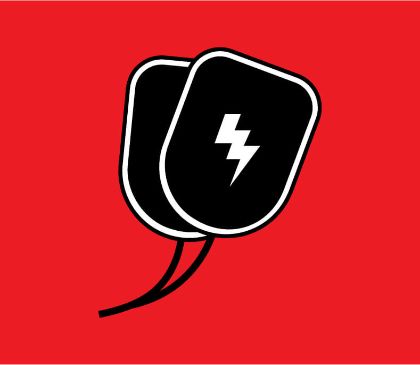Managing Sudden Cardiac Arrest in Dental Practices
- May 6, 2019

Is your dental practice ready to manage a sudden cardiac arrest?
There are more than 350,000 out-of-hospital cardiac arrests (OHCA) annually in the U.S. and nearly 90% of them are fatal, is your dental practice ready to manage a sudden cardiac arrest?
According to the American Dental Association (ADA), dental teams should be trained and adequately equipped to provide an immediate and coordinated emergency response for patients experiencing a medical emergency such as chest pain or sudden cardiac arrest (SCA).
Is Your Dental Team Prepared to Manage Cardiac Arrest?
Dental team members must be prepared to handle a medical emergency. Your office should have a well-rehearsed emergency response plan as well as a fully-stocked AED dental package that includes:
- AED wall cabinet
- AED
- Adult and pediatric pads
- AED Case
- Spare AED battery
- Rescue ready kit
- AED Decal and signage
- Check tag
Know the Difference Between Chest Pain and SCA
The primary difference between chest pain and cardiac arrest is that a patient experiencing chest pain will almost always remain conscious. Take note: chest pain can quickly progress into arrhythmias, which can lead to sudden cardiac arrest.
It’s also important to remember, however, that SCA can occur to anyone at any time and may not be preceded by chest pain.
What to Do if a Dental Patient Experiences Chest Pain or SCA
If your patient begins to complain of chest pain, call for help immediately. Make sure the patient is as comfortable as possible. Keep them talking! If they’re talking, you know their airway is clear and there’s enough oxygen to support blood flow throughout the body.
During cardiac arrest, the heart is unable to pump enough blood and oxygen to the body. Without oxygen, a patient will quickly lose consciousness and become unresponsive.
Follow these steps if one of your patients is experiencing cardiac arrest:
- Call 911
- Ask a colleague to retrieve the AED
- Place patient on a firm surface in a supine position
- Begin chest compressions at 120 compressions per minute
- Provide rescue breathing or oxygen
- Turn on AED and follow prompts
- Continue CPR and follow the AED prompts until EMS arrives
Best Practices for AED Program Management in Dental Offices
Keep Your AEDs in Plain Sight
If your dental office has an AED, make sure it’s easily accessible and in plain sight. If you don’t have an AED, you should purchase one immediately! Larger practices should consider having more than one AED. Remember, timing is critical when it comes to administering CPR or defibrillation. For every minute that passes without CPR or defibrillation, the chance of survival decreases 7-10% (American Heart Association).
Invest in an AED Compliance Management System
Make sure that your AEDs are in compliance and are emergency-ready with a user-friendly AED Compliance Management System. Online systems such as Cardio Partners’ Premium AED Compliance Management System ensure that your equipment is properly registered, checked, logged, and that your physician’s prescription is up-to-date. These systems can also help you track the expiration dates of your defibrillators’ batteries and pads.
Make Sure Your Entire Staff is BLS Certified
Every two years, dental team members should receive comprehensive training on basic life saving techniques. This helps ensure that everyone is prepared to perform these lifesaving duties when called upon. So keep your BLS certifications up-to-date and make sure each and every staff member is first aid and CPR certified!
Know the Drill
Regularly discuss your emergency management plan and your procedures for handling cardiac arrest with your team members. Schedule regular reviews of your emergency plan so your team is ready to respond in the event of an emergency.
For more information about managing sudden cardiac arrest in your dental practice, call Cardio Partners at 800-544-0004. You can also email us at customerservice@cardiopartners.com.
DISCLAIMER: Information and resources found on the cardiopartners.com and aed.com websites/blogs is intended to educate, inform, and motivate readers to make their health and wellness decisions after consulting with their healthcare provider. The authors are not healthcare providers. NO information on this site should be used to diagnose, treat, prevent, or cure any disease or condition.
DISCLAIMER: The information included in this post and on our website is not intended as legal advice. As legislation changes often, this post may inadvertently contain inaccurate or incomplete information. We urge you to contact your state representative should you require more information about current AED, CPR, and Good Samaritan laws in your state.










 CALL US:
CALL US: